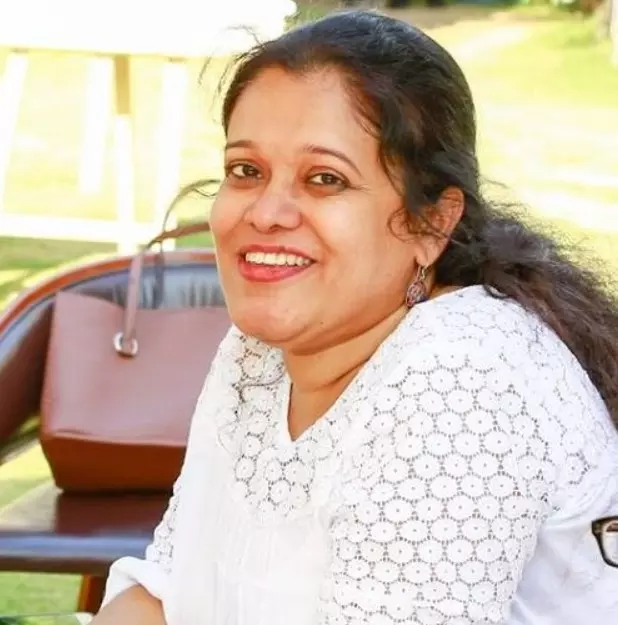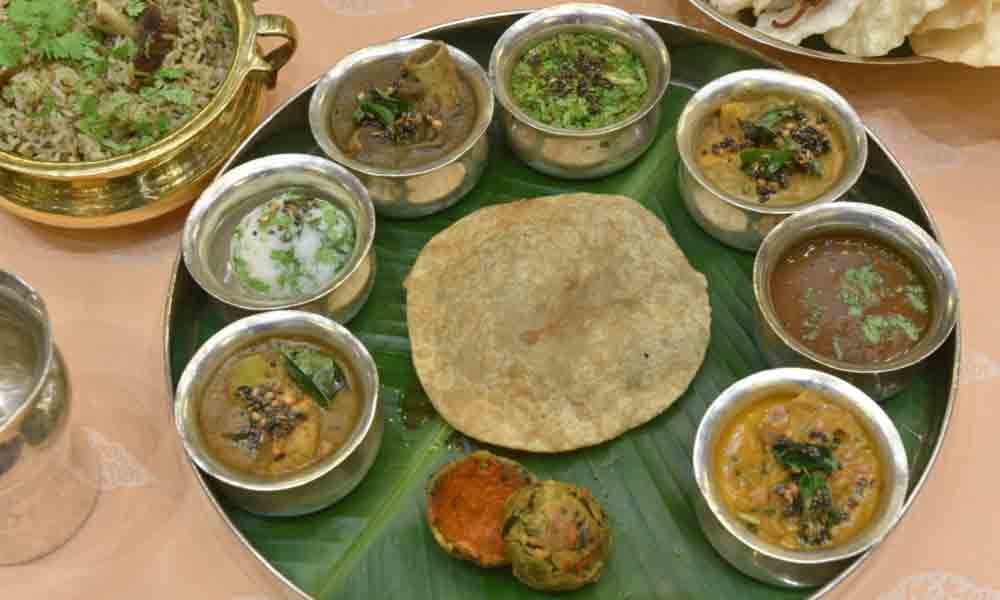Live
- Nizamabad MP Dharmapuri Arvind and Jagtial MLA Dr. Sanjay Kumar Meet CM Revanth Reddy
- Hyderabad CP CV Anand Issues Stern Warning to Bouncers
- MP Laxman Criticizes Police Conduct, Calls for Support for Victims' Families
- Fire Breaks Out in Kachiguda-Chennai Egmore Express, Passengers Evacuated Safely
- CM Revanth Reddy Condemns Attacks on Film Personalities' Homes, Calls for Strict Action
- Victory Venkatesh and Nandamuri Balakrishna to Set Screens on Fire with Unstoppable Season 4
- Over 71.81 crore Ayushman Bharat Health Account numbers generated: Centre
- In special gesture, Kuwait's Prime Minister sees-off PM Modi at airport after conclusion of historic visit
- Veer crowned PGTI Ranking champion, Shaurya wins emerging player honour
- Sr National Badminton: Unseeded Rounak Chauhan, Adarshini Shri reach singles semis
Just In
Bringing back the forgotten royal food

India is a land of variety, the many cultures, umpteen traditions, and myriad cuisines. With centuries of history and royalties from across the land, not just promoting arts, but enriching their kitchens with best of the cooks and the richest of the ingredients, the culinary traditions too have been mindbogglingly vast and the dishes from the royal kitchens reflected the eating habits, livelihood of people, geography and what grew on the land, the abundance or scarcity of the livestock, the kind of vocations the royals involved in – were they involved in many wars or were essentially peace-loving and connoisseurs of arts and finer things in life – were all reflected in the food that they ate. Above all, in spite of richness and extravagance, royal cuisines were also primarily focused on health and wellness.
Going back in time and studying royal cuisines reveals many new facets of how our food culture emerged. Take for example the use of chillies in our food, which was, thanks to the Dutch, who plundered the pepper and brought chilli to our land. Before this, it was pepper that was predominantly used in Indian royal kitchens from across the land. Rice was always there, even during the Sangam time; however, it was only the kings, who ate rice. The commoners' staple was millets.
Formerly a Company Secretary, and now a food researcher and Chef Shri Bala from Chennai comes from Iyengar family. And what began with a love for food and a naturally curious mind eager to explore turned into full-fledged research that involved a lot of internet searching, online books, library visits to across south India and beyond (she even visited a library in Colombo in search of books on traditional recipes). In the process, she discovered many much-forgotten recipes, which she decided she must bring it to food lovers. And thus, began her role as a chef who curates traditional forgotten recipes for food festivals across the hotels. She is also pursuing her PhD in Ancient Cuisines and Evolution of Food from Sangam times to now.
She is in ITC Kakatiya hotel to showcase the royal cuisines of south Indian kingdoms of Chola, Kakatiya, Vijayanagara and Sethupathi at Dakshin restaurant. The food promotion titled 'Rajoupacharam' features ancient dishes like Iddalige, which is urad idly encased in a puri; Benne chikitse anna that says its healthy in its name itself; Kootan soru, which is a one-pot meal made using select vegetables and rice encased in lotus leaf, Mossuru bhutti – curd rice dumpling with spicy green chutney – a simple dish with a little process involved. Sarvapindi from Telangana, which she made in smaller sizes using Paniyaram moulds and Golichina Mamsam from the same area; Menthi kadubu, Eral varai – prawns tossed in black pepper, quail and black pepper; Kothina kari – minced mutton with spiced urad crumble, and unique desserts like Paruthipal Pongal (cottonseed milk Pongal with palm jaggery) in addition to Akki hesurubele payasam adding the sweet touch made for an exhaustive royal menu.
Among the many books, Shri Bala read for history and recipes is the 'Manasaullasa' written in 1100 AD by Somadev 3, which is a five-part book – each part dedicated to one art that brings joy to the heart. The book also has recipes belonging to Karnataka region, but without weights and measures, and hence it took Shri Bala some trial and error to reach what she perceived as closest to the original dishes. The book also has non-vegetarian recipes which included the game meat that royals relished including the deer curry. Yet another book that the chef referred to was 'Lokopakara' that had a chapter dedicated to cookery. Much of the cuisine from Vijayanagara dynasty was found from Supa Sastra that was commissioned during the 1600 AD by a Jain ruler Mangarasa 3, where recipes are discussed in great detail.
She shares, "In those days people followed the principle of 'Your Food Your Medicine'. Doctors were available only for external wounds. Internal treatments for common ailments happened with food. And it was the Vijayanagara dynasty that gave temple food structure for all south temples. The women were powerful in the Hindu religion, and they took care of the temples, and it was they who set the various prasadams that are offered five times through the day."
Sharing her research closer to the land, she relates, "Kakatiyas ate rustic food because of the rocky terrain fresh food was not so widely available. Even today, in Telangana, and important occasion like a son-in-law coming home means that a goat comes home and along the day all its parts are cooked, and the goat will be polished off with much relish."
"I was not able to do much research on Kakatiya cuisine because I was not able to get my hands on any decent book or research. The libraries here have been very disappointing," states the researcher, who hopes she will be more well informed about Telangana royal cuisine when she visits the next time.

© 2024 Hyderabad Media House Limited/The Hans India. All rights reserved. Powered by hocalwire.com








